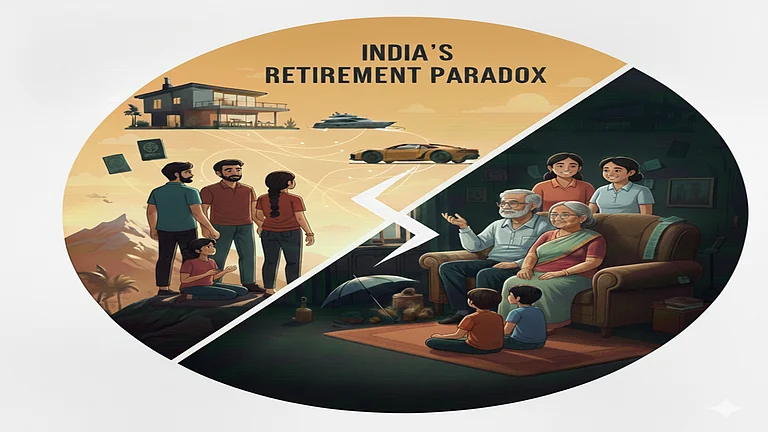Banks today credit themselves for faster credit decisions, vastly improved customer experience, significant cost-saving, efficient security parameters, and a security risk profile! All thanks to digitalisation, the journey thus far has been quick and disruptive.
Rewind to little more than a decade back, and the traditional banking sector was marred with delay issues, processing hassles, cumbersome formalities, and many disgruntled customers. In the internet era, while other sectors were galloping into the adoption of digital services, the banks were yet reluctant to move away from the ‘paper & pen’ approach. However, with the rapid development of technology and the evolving customer choices, banking and financial services got a facelift with a quick digital transformation. Today essentially, we have banks that are not customarily a tech company but do adapt tech – these are the traditional banks that our adults have grown to, and then we have tech companies that are banks – these are the fintech players, here to only stay and grow.
For the financial sector, credit is at the heart of most customer relationships and digitalising it has its perks for both banks and customers. Leading banks have surely reduced the ‘processing time’ ‘significantly, thus enabling most traditional banks internally to not only provide the best experience to customers but also value time at its core. Fintech banks are one step further when it comes to automating low-risk credits. Here, the “time to cash” can be as little as 5 minutes.
Digitisation does not mean replacing humans with machines, it essentially means that some processes have been automated for overall efficiency and a seamless operational chain. While customer relationships and engagement remain ‘human’, banks can use Big Data and Artificial Intelligence to expedite operational stages and minimise error and risk of fraud.
So how does this affect banks internally? It is not just a project to upgrade systems or be more digital but the root of banking itself is seeing constant push and pull between the legacy systems/processes and embracing the enhanced world of secure digitization. Whilst most of them realise that it is absolutely crucial to digitise processes like lending, but more than one fails to deliver the outcomes due to hardships such as no single owner and not a cohesive co-operation between different verticals such as risk, finance, IT, compliance. However, some have successfully overcome these hurdles and with the rise in fintech, adaptability are seeing brilliant results in the companies that have technology at their heart with security as their brain.
Here are few ways digital lending is changing the way banks operate:
Smarter and accurate user information access: Digitalisation of documentation is not only timely and efficient, but also reduces the scope for manual errors (incorrect spelling or misplacements of documents) and ambiguity of information shared considering the nature of hand-written documents. Physical proximities add to the time delays too. Needless to say, it also enhances the customer experience.
Quicker decision making: To provide instant loans, one must be able to secure approvals at a lightning speed and that requires robust evaluation and fraud alert mechanism in place. Long delays in the loan evaluation and approval process can mean losing out a customer. Here automated analytical tools that can decipher complex number algorithms and customer engagement patterns, help in making quick turnaround decisions, well supported with numbers and trend patterns. It would require big capital, enormous amounts of time, and a huge workforce, to achieve the same volume of work, with human intervention.
Superior vigilance and security upgrade: Data theft and fraud are major concerns for the banking sector. The digital process allows granular monitoring of candidate credit history and payment patterns and also provides robust security solutions to prevent any dubious activities. Advanced behavioural analytical tools which are AI-enabled and new-age cloud-based security systems make it nearly impossible to breach.
Allows financial inclusion: Traditional banking services had physical and operational limitations which was a handicap to reach the last mile audience. Also, archaic formalities and paperwork made it further difficult for the common masses to access these banks. But digital lending will give banks the potential to reach into the hinterlands of the country, thanks to the internet penetration and smartphone adoption in society. Banks can rely on smart automated tools and analytical data to determine the credit worthiness of the individual lacking a credit score or payment history, etc. This has been one of the biggest boons of digitalisation of financial services, providing accessibility to the underserved population.
While traditional banks are becoming increasingly digital-driven, there was an entire segment of non-traditional banks that emanated from the womb of technology, now popularly also known as fintech banks. They are riding way ahead on the digital life-cycle and bringing in rapid innovative solutions whilst changing the face of the banking industry through seamless digital credit lending. These players are agile, innovative and fiercely customer-centric, thus paving the way to the new phase of banking. In fact, organizations like FACE (Fintech Association for Consumer Empowerment) a non-profit industry body made with leading fintech entrepreneurs and led by a governing council team has been instituted to help create an effective dialogue and working relationship with industry partners and policymakers to advocate fair and responsible lending practices and promote digitisation and financial inclusion themes. Today, there are numerous digital lending frameworks and with technology adoption, banks are becoming an integral part of the evolving new ecosystem.
The author is Member FACE and Managing Director & Founder, Kissht
DISCLAIMER: Views expressed are the author’s own, and Outlook Money does not necessarily subscribe to them. Outlook Money shall not be responsible for any damage caused to any person/organisation directly or indirectly.













